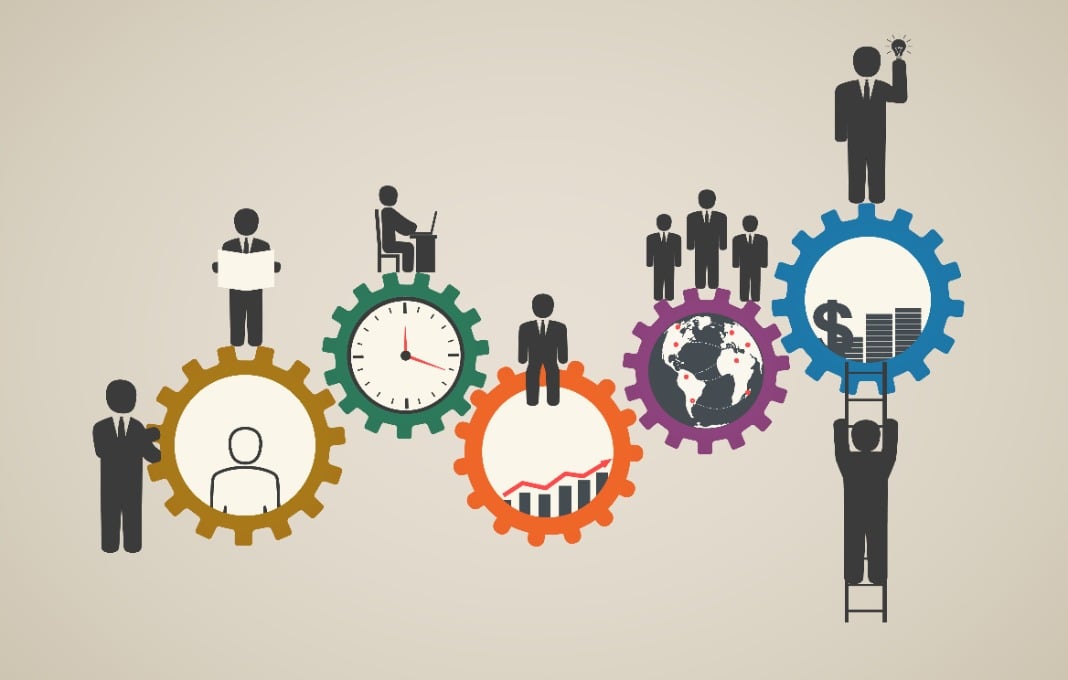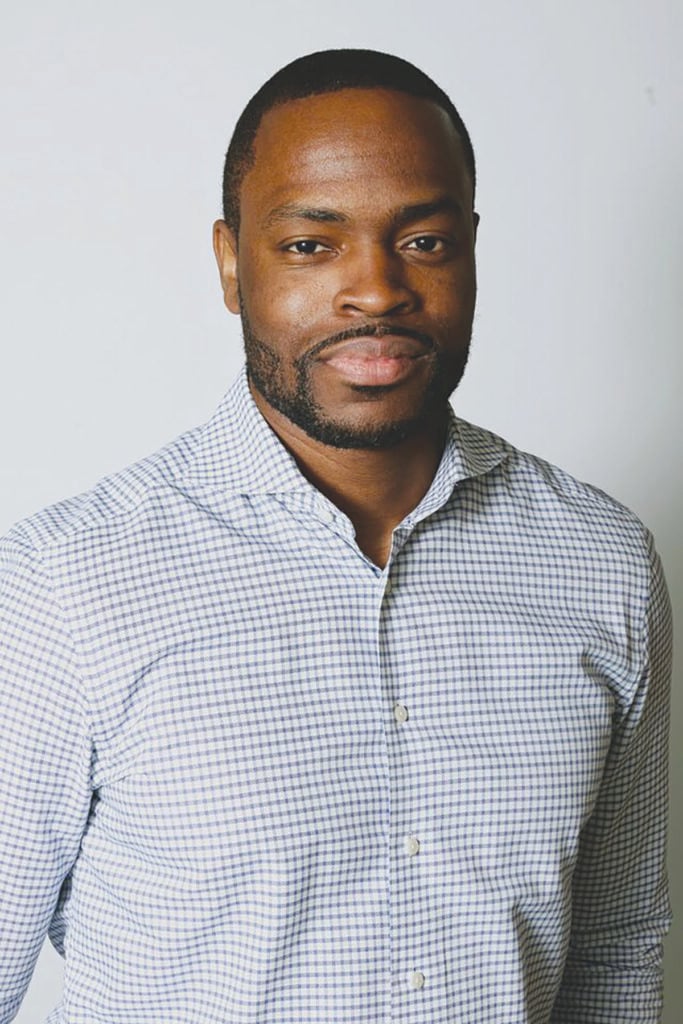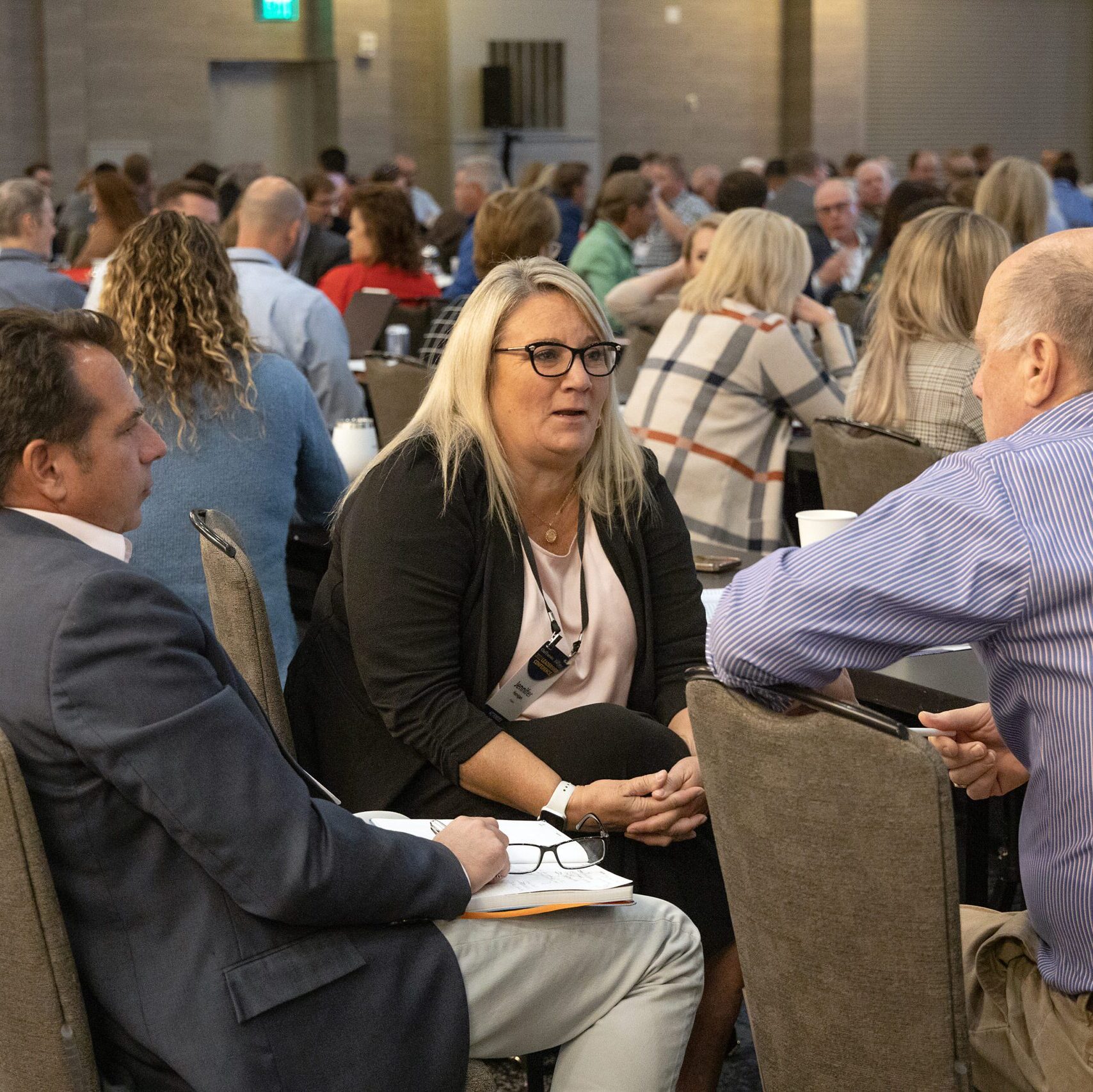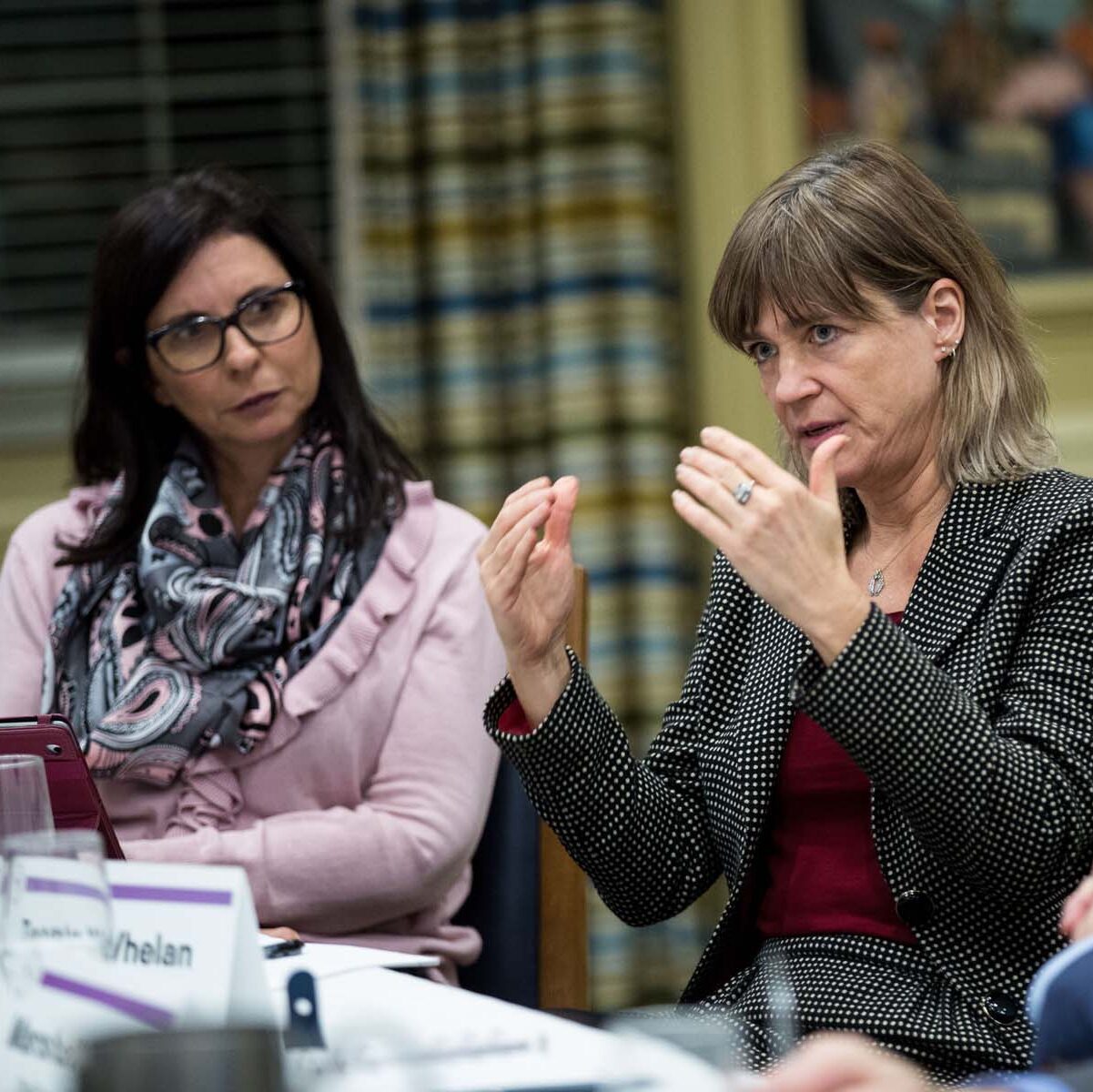


Heather Perry didn’t sleep much the night before our interview. But that’s become something of a pattern, of late. As CEO and cofounder of Klatch Coffee, she’s opening 20 locations in the next year—a massive leap for a company that’s grown organically for decades. It wasn’t the real estate or the logistics that kept Perry up. “Honestly, the No. 1 thing is: How do we create the right touchpoints to train and inspire people as we grow?” she says. “The coffee will be fine. It’s the people I’m worried about.”
That concern is widely shared among her peers. According to a recent Gartner survey, CEOs named “talent and workforce” as their top challenge. The second-most pressing issue? “Culture and people management.”
“By quite a distance, talent and workforce came out as the top challenge CEOs are trying to get right,” says Cian O Morain, senior director of talent management content strategy lead at Gartner. “It’s taking up a large amount of headspace for today’s CEOs—and for good reason.”
CEOs worry not only about hiring for their skills needs today, but also how to predict their needs a year or two down the road and make sure the company is building the necessary internal pipelines and treating succession planning as a long-term investment in adaptability rather than a crisis response. “In the current climate, if the talent strategy isn’t their talent strategy—if they’ve outsourced it to their CHRO—they’ve missed a trick,” says Morain.
At the same time, whiplash-inducing tariff swings and extreme market volatility have made it difficult for CEOs to forecast around hiring budgets. CFO Leadership’s Q2 Confidence Index found fewer than half of CFOs surveyed plan to add headcount in 2025—down from 57 percent in Q1. Similarly, just 41 percent of CEOs surveyed in Chief Executive’s June CEO Confidence Index planned to increase headcounts in 2025.
“What we have right now is zero ability to forecast whether the next 12 months is going to be a positive or a negative,” says FW Cook CEO Dan Ryterband. “All of this uncertainty is making business planning with any degree of precision virtually impossible.”
Then, there’s AI’s meteoric impact, changing the labor needs and overall talent strategy for nearly all companies in all industries—and fast. In a recent study by IBM, 77 percent of CEOs acknowledged that AI will have the most significant impact on their industry in the next three years. Yet, only 62 percent of employees received any kind of AI training, underscoring the difficulty companies are having keeping up with the pace of change.
It’s a lot. No small wonder CEOs are rethinking how they define talent, lead through uncertainty and build organizations resilient enough to weather what’s next. Here are five of the most urgent and actionable talent trends to watch in 2025:
As economic conditions shift, more companies are leaning into skills-first thinking and internal development to create a resilient workforce. The traditional focus on pedigree and tenure is giving way to a sharper focus on competencies, agility and fit for the future. And scenario-planning/ prediction is losing ground to hiring for adaptability so that, no matter what happens, your people are ready.

“We are seeing a real shift,” says Kathy Gersch, chief commercial officer at Kotter. “It’s less about figuring out every eventuality that could happen, and more about preparing your organization to be able to adapt and change as they happen.”
CEOs know that means focusing on skills development, but few have the systems to do it well. Morain notes that only 8 percent of talent leaders say they’re confident in their workforce skills data, making it challenging to know where to focus.
His advice: prioritize. “Start by identifying the most business-critical roles—then narrow in on which of those are most dynamically changing due to AI or market disruption. Don’t try to plan for the entire workforce—start with the highest-impact 20 percent.”
Instead of hiring for current proficiency, focus on future potential. “Organizations are starting to assess skills promise, not just skills proficiency,” he says. “What can this person grow into—not just what can they do today?”
That also means planning for leadership continuity. “Even in a 15-person company, you need a continuity plan—even if the gap between Person A and their backup is 40 percent,” says Fred Voccola, vice chair and former CEO of Kaseya. “Whether it’s grooming someone internally or having recruiters lined up, you need to be ready.”
For startups, this kind of agility begins at the hiring stage. Michael Gifford, CEO of fintech Splitero, says early hires must be both adaptable and team-oriented. “If they are resilient through the changes startup life brings and willing to lend a hand, they will succeed at Splitero,” he says, noting that this mindset has shaped his leadership philosophy from day one. “I support everyone at Splitero to be fearlessly decisive, autonomous but collaborative and creative problem-solvers.”
One thing is clear: Leadership development and succession planning can no longer be limited to the top of the org chart. Companies are finding value in cultivating decision-makers across functions—not just for agility, but also to build a deeper, more resilient bench. Several CEOs emphasized that empowering leaders at every level strengthens continuity and drives performance under pressure— and it surfaces future leaders earlier and more organically, deepening the leadership bench in the process.
AI isn’t just disrupting workflows—it’s upending the entire talent lifecycle. From hiring to performance evaluations, AI tools are altering how companies assess, manage and develop people. And it’s changing what can be accomplished by the existing workforce.
“Proper use of AI tools… allow people to not only be 20 percent more efficient but like 200 percent more productive,” says Voccola. “R&D, software development, marketing—these are all huge areas. Salespeople of the future will be managing dozens of AI bots… managing many versions of themselves out there.”
That shift isn’t limited to productivity gains—it’s also redefining how organizations structure workforces, distribute tasks and design talent strategies. “We’re moving from a situation where it’s not human or bot; it’s human and bot. So, the workforce will be a blended mix of AI agents and humans,” says Morain, adding that “the best CEOs are mandating their CHROs and their CIOs co-create the talent strategy together.”
Amid the push to optimize through automation, some leaders are emphasizing AI’s potential to deepen human skills—not replace them. Phil Friedman, CEO of CGS, takes a human-first view of AI. “AI, when used ethically and thoughtfully, can play a powerful role in accelerating [soft skills] development,” he says. His company, which offers business process outsourcing, uses Cicero, an immersive AI-powered training tool to help employees rehearse high-pressure scenarios like de-escalating conflict or giving feedback.
Perry is exploring AI’s value in more operational ways. While not in use for day-to-day retail at Klatch, it’s already proving helpful in back-office functions like marketing and hiring. One hiring manager recorded his interviews, transcribed them and fed them to gen AI and asked it who would be the best candidate. “I was like, ‘ooh, I like that,’” says Perry. “It’s not how he made his decision, but he used it as part of that decision-making process. That’s a really interesting way to use it.”
What separates the AI tools from old-school profiling is their ability to detect “derailers”—traits or behaviors that might not show up in interviews but could lead to underperformance. “So you now know where the weaknesses are,” says Dennis Carey, vice chair at Korn Ferry. “You now know what you need to do to give that person a better chance to succeed. You can upskill them, give them support, a mentor, whatever it might be.”
Today’s workforce wants purpose, flexibility, growth—but rising disengagement is forcing leaders to rethink how they define and drive performance. According to Gallup, only 21 percent of global employees reported being engaged in 2024—a drop driven largely by burned-out managers and younger workers. The ripple effects are costly: $438 billion in lost productivity worldwide.

Yet many organizations rely on outdated approaches to motivation and loyalty. Compensation, while certainly important, isn’t enough—particularly for small and midsize companies competing with deep-pocketed Goliaths for talent. “When people feel like they’re building something, not just executing a plan, they stay,” says Samyr Laine, managing partner of Freedom Trail Capital. “Small moments of recognition, clear growth paths and honest communication go a long way.”
For frontline workers, autonomy and connection matter as much as mission. Says Perry, “We do a four-day workweek and flexible scheduling, but we also let every manager take ownership of their store. They run events, try out new pastries, build community. That retains talent.”
Meanwhile, some CEOs are doubling down on in-person engagement. “I’m a firm believer in in-office culture,” says Voccola. “It adds 15 to 25 percent in productivity and creates better customer experiences. It also accelerates mentoring and employee development.”
But the warning signs are clear: Engagement is eroding. Morain reports that only 44 percent of employees are willing to support their latest change initiatives—down from 74 percent a decade ago. “We measure something called ‘network performance’—how well people elevate those around them. That number’s at just 12 percent today. People are exhausted.”
What’s needed, say experts, is a deeper cultural shift. “Some are moving in this stress environment to more of that command-and-control, just-tell-people-what-to-do mentality,” says Gersch. “People may stay in that for the short term because they’re scared. But as soon as that condition changes, if you haven’t shown them that you’re really valuing what they can contribute, they’ll leave.”
Ultimately, purpose and autonomy have moved from nice-to-haves to must-haves. “If your culture doesn’t support change resilience, you won’t make it through transformation,” says Morain. “We’re seeing the best companies developing leaders who are resilience builders, who routinize the reflexes of dealing with change.”
Culture has always mattered—but now it may be your only sustainable advantage. As companies grapple with AI disruption, macroeconomic shocks and demographic shifts, long-term success increasingly hinges on their ability to evolve from the inside out.
“You can’t outthink every possible scenario,” says Gersch. “You have to build a bench that’s able to pivot.”
Carey underscores the point: “Companies are only made up of two things: money and people. Many companies understand the money part—but they don’t understand the people side of the equation.”
That gap in understanding shows up when culture, talent strategy and business strategy are misaligned. “There’s often a disconnect between what the talent strategy is focusing on and what the culture is you’re trying to create,” says Dr. Laura Hamill, co-founder of Limeade. “You have to be intentional about making that experience real.” That intentionality, she explains, shows up in the details: “It’s the story you tell at onboarding. It’s what you reinforce and reward. It’s how performance management is designed. It’s whether people feel they’re trusted and cared for.”

As hybrid work models become the norm, leaders must work harder to ensure that culture transcends geography. Kimberly Taylor, CEO of JAMS, touts deliberate connection-building. “Defining and maintaining a strong culture always requires intentionality, particularly when associates are working remotely or are geographically disbursed,” she says. “We create frequent opportunities for cross-collaboration across teams and bring associates together for in-person events throughout the year.”
If efforts fall short and the lived employee experience fails to reflect the company’s website or leadership messaging, it can lead to “cultural betrayal,” says Hamill. “That’s when people see the values on your website and then don’t experience them in how performance is managed or how they’re onboarded. That gap is damaging.”
David Naylor, CEO of Rayburn Electric Cooperative, shows how a consistent, values-driven culture becomes an advantage. “We intentionally moved away from the classic pyramid-shaped hierarchy toward a flat organization mindset,” he says. “That means giving people the freedom to make decisions in their area, the tools to act on them and the trust they’ll use that freedom wisely.”
That approach empowers Rayburn’s cross-functional teams to adapt quickly to disruption—from climate-related risks to AI-fueled energy demand. “We foster the belief that their work matters, and their voice has weight,” says Naylor. “That drives resilience through uncertainty.”
Culture isn’t about slogans—it’s about behaviors. Naylor takes responsibility for fostering cross-functional collaboration, open communication and leaders below him who really walk the talk. “I try to listen more than I talk. I try to show up. Leadership doesn’t live behind a desk. It lives in front of people, showing up where it’s needed.”
And leaders must be held accountable. “When you have a scenario where you say you want to operate this way, but then you allow one leader on your team to operate differently, it undermines everything,” says Gersch. “That worked 20 years ago. It doesn’t work now.”
CEOs are reevaluating how compensation aligns with performance, risk and retention—and trying to gauge whether to make exceptions. After all, when pay is based on the value of the stock in order to align performance with shareholder interest and that stock tanks due to external factors—e.g., sweeping tariffs—retention becomes a concern.
But Matt Turner, managing director at Pearl Meyer, cautions against overreaction. “There’s so much unknown about what will happen with the tariff situation. It’s better to wait and see… if you make an adjustment now and it looks like you’ve benefited from a windfall, that can be really bad optics.”
Ryterband says the uncertainty is prompting boards to favor flexibility and defensibility over rigid performance frameworks. “The ultimate objective in a compensation system is to have balance because balance should lead to durability in both favorable and unfavorable economic climates,” he says. “Moving toward a relative measure as opposed to setting this absolute also takes out some of the imprecision.”
Turner agrees that equity remains a critical tool. “Using time-based restricted stock makes a lot of sense,” he says. “It may fall 20–30 percent in a year, but it’s still helpful in a retention situation.”
For mid-sized companies that struggle to compete on salary alone, culture becomes the key differentiator, says Morain. Showcase growth paths so that employees can see their future in your company, and emphasize stability during times of uncertainty. “Candidates are cautious right now,” he says. “Switch premiums are at a low. Reassuring them about your long-term plans will be critical to get people to take the leap.”
Designing pay plans that can withstand disruption isn’t just a financial exercise—it’s also a leadership one. Friedman emphasizes the importance of people-first decision-making at the top. “One mistake is viewing talent as a cost center instead of a growth engine,” he says. “Building the right team doesn’t solely live within HR. It’s a strategic imperative that touches every part of the business.
“At CGS, I’ve interviewed hundreds of people over the years,” he adds, “and I still believe it’s one of the most important things a CEO can do.”




0

1:00 - 5:00 pm
Over 70% of Executives Surveyed Agree: Many Strategic Planning Efforts Lack Systematic Approach Tips for Enhancing Your Strategic Planning Process
Executives expressed frustration with their current strategic planning process. Issues include:
Steve Rutan and Denise Harrison have put together an afternoon workshop that will provide the tools you need to address these concerns. They have worked with hundreds of executives to develop a systematic approach that will enable your team to make better decisions during strategic planning. Steve and Denise will walk you through exercises for prioritizing your lists and steps that will reset and reinvigorate your process. This will be a hands-on workshop that will enable you to think about your business as you use the tools that are being presented. If you are ready for a Strategic Planning tune-up, select this workshop in your registration form. The additional fee of $695 will be added to your total.

2:00 - 5:00 pm
Female leaders face the same issues all leaders do, but they often face additional challenges too. In this peer session, we will facilitate a discussion of best practices and how to overcome common barriers to help women leaders be more effective within and outside their organizations.
Limited space available.

10:30 - 5:00 pm
General’s Retreat at Hermitage Golf Course
Sponsored by UBS
General’s Retreat, built in 1986 with architect Gary Roger Baird, has been voted the “Best Golf Course in Nashville” and is a “must play” when visiting the Nashville, Tennessee area. With the beautiful setting along the Cumberland River, golfers of all capabilities will thoroughly enjoy the golf, scenery and hospitality.
The golf outing fee includes transportation to and from the hotel, greens/cart fees, use of practice facilities, and boxed lunch. The bus will leave the hotel at 10:30 am for a noon shotgun start and return to the hotel after the cocktail reception following the completion of the round.